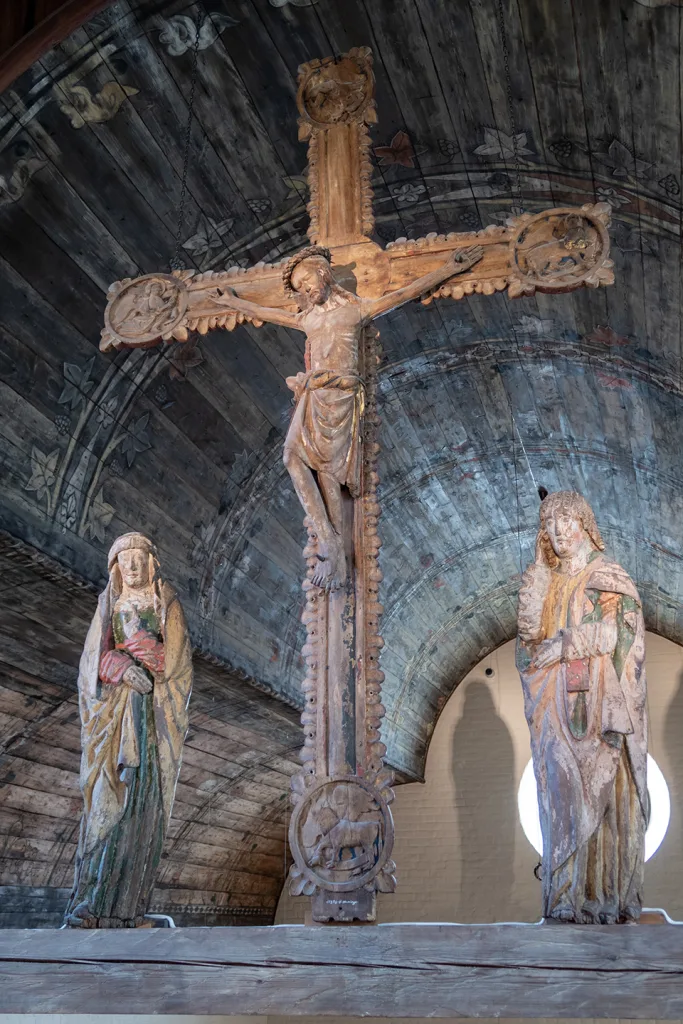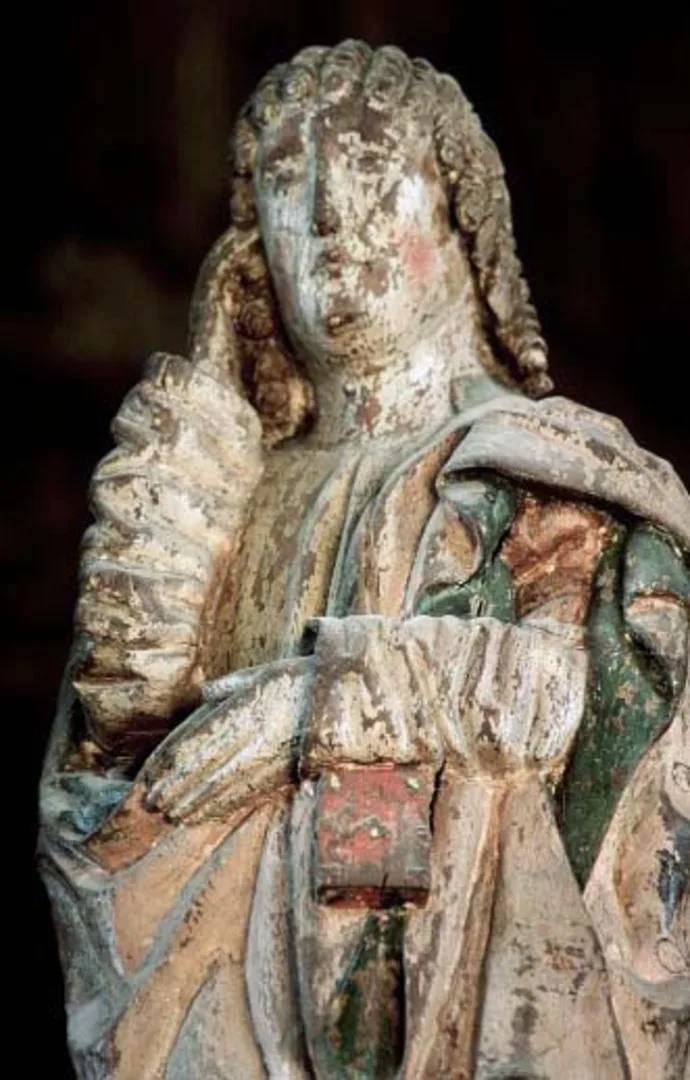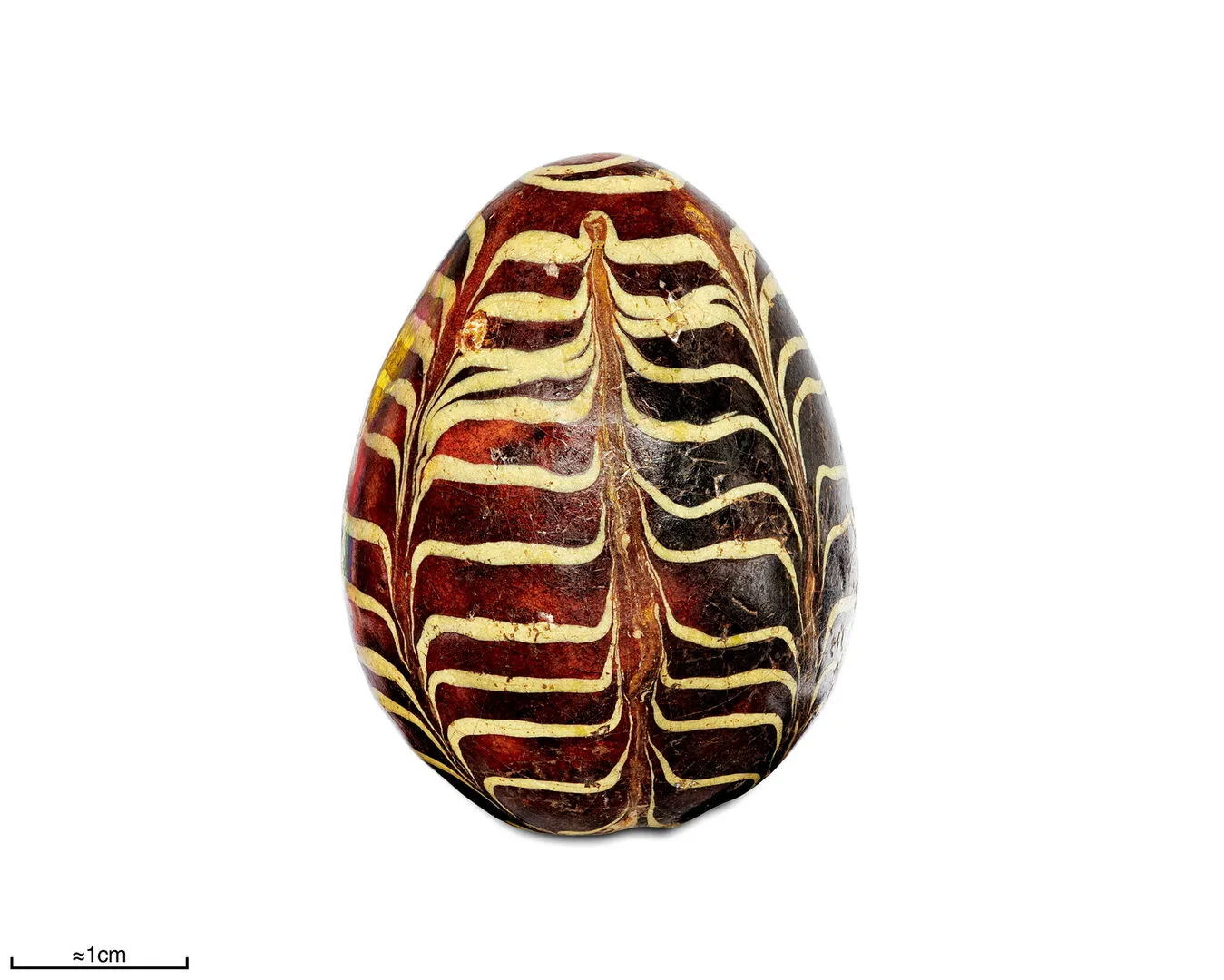Medieval saints: John
Viking Age
AD 800 – AD 1100
Middle Ages
AD 1050 – AD 1520
Modern Age
AD 1520 – AD 2025
Here, we refer to John as the Apostle or the Evangelist John, to distinguish him from John the Baptist. John is often described as Jesus’ favourite disciple. As evangelist, however, he is portrayed as an elderly man. He is regarded as the author of the Gospel of John, as well as the writings known as the Johannine texts.
John is said to have come from Bethsaida in Galilee. Legend holds that he preached in Asia and ended his days in Ephesus, in present-day Turkey. He was believed to have died of natural causes, the only apostle not to suffer martyrdom.


Saint John. Photo: Mattias Malmberg, The Swedish History Museum/SHM, CC-BY 4.0.

Saint John
Sculpture from Bjäresjö church, Skåne.
On view at Historiska museet in the exhibition Medeltida konst
John survives twice
According to the Golden Legend, the Emperor Domitian summoned John to Rome. At the Porta Latina, he was tested by a priest who bade him drink from a poisoned chalice. John made the sign of the cross over it, whereupon the poison left the cup and slithered away in the form of a serpent.
In another story, the emperor ordered John to be boiled in oil. When he survived, he was banished instead to the island of Patmos.

Depictions of Saint John
To emphasise his youth, he is the only disciple shown beardless in art. Saints are often portrayed with symbols of their martyrdom; John is shown holding a poisoned chalice, usually resembling a medieval communion cup. The poison may be represented by a small serpent or dragon emerging from it.
In a 15th-century altarpiece (1475) from Sollentuna Church in Uppland, preserved at the Swedish History Museum, the doors are adorned with carved saints. John stands on the right, holding a chalice, beside Saint Barbara with her tower.
As evangelist, John’s symbol is the eagle, itself representing the inspiration of the Holy Spirit. His feast day is 27 December.

Altarpiece
Saint John is in the top left corner. From Sollentuna church, Uppland.





